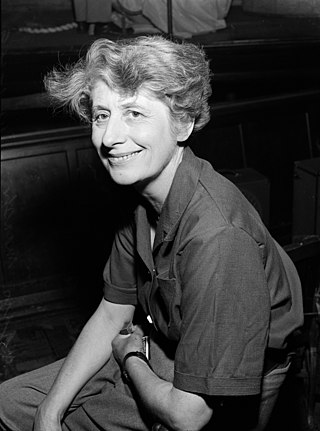
Dame Edith Ngaio Marsh was a New Zealand mystery writer and theatre director. She was appointed a Dame Commander of the Order of the British Empire in 1966.
Roderick Alleyn is a fictional character who first appeared in 1934. He is the policeman hero of the 32 detective novels of Ngaio Marsh. Marsh and her gentleman detective belong firmly in the Golden Age of Detective Fiction, although the last Alleyn novel, Light Thickens, was published in 1982.
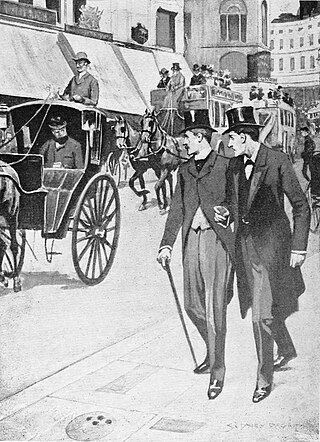
The amateur detective, or sometimes gentleman detective, is a type of fictional character. He has long been a staple of crime fiction, particularly in detective novels and short stories set in the United Kingdom in the Golden Age. The heroes of these adventures are often members of the British gentry or gentlemen by conduct. They are sometimes contrasted with professional police force detectives from the working classes.
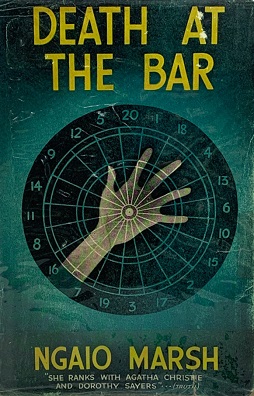
Death at the Bar is a crime novel by Ngaio Marsh, the ninth to feature her series detective Chief Detective-Inspector Roderick Alleyn of Scotland Yard and published in 1940 by Collins (UK) and Little, Brown (USA).

Final Curtain is a 1947 crime novel by the New Zealand author Ngaio Marsh, the fourteenth in her series of mysteries featuring Scotland Yard detective Roderick Alleyn. It was published in Britain by Collins and in the USA by Little, Brown. The plot features the world of actors, and Alleyn's wife, the artist Agatha Troy, has a main role in the story.
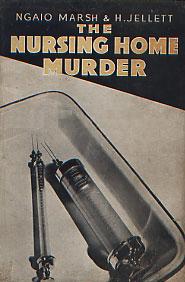
The Nursing Home Murder (1935) is a work of detective fiction by New Zealand author Ngaio Marsh and Henry Jellett. It is the only book Marsh co-authored.

A Man Lay Dead is a detective novel by Ngaio Marsh; it is the first novel to feature Roderick Alleyn, and was first published in 1934. The plot concerns a murder committed during a detective game of murder at a weekend party in a country house.

Death in Ecstasy is a detective novel by Ngaio Marsh, the fourth to feature her series detective, Chief Inspector Roderick Alleyn of Scotland Yard. It was first published in 1936.

Artists in Crime is a detective novel by Ngaio Marsh; it is the sixth novel to feature Roderick Alleyn, and was first published in 1938. The plot concerns the murder of an artists' model; Alleyn's love interest Agatha Troy is introduced.

Surfeit of Lampreys is a detective novel by Ngaio Marsh; it is the tenth novel to feature Roderick Alleyn, and was first published in 1941. The novel was published as Death of a Peer in the United States.

Death and the Dancing Footman is a detective novel by Ngaio Marsh, the eleventh of her Roderick Alleyn books and was first published in 1941 in the US by Little Brown of Boston and in 1942 in the UK by Collins Crime Club. It was written in New Zealand, but set in a Dorset, England country house.

Colour Scheme is a detective novel by Ngaio Marsh; it is the twelfth novel to feature Roderick Alleyn, and was first published in 1943 by Collins Crime Club. The novel takes place in the Northland region of New Zealand during World War II; the plot involves suspected espionage activity at a hot springs resort on the coast of New Zealand's Northland region.
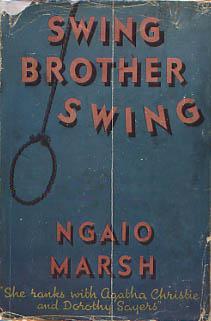
Swing, Brother, Swing is a detective novel by Ngaio Marsh; it is the fifteenth novel to feature Roderick Alleyn, and was first published in 1949 in the UK. The novel was published as A Wreath for Rivera in the United States. The plot concerns the murder of a big band accordionist in London.

Spinsters in Jeopardy is a detective novel by Ngaio Marsh; it is the seventeenth novel to feature Roderick Alleyn, and was first published in 1953.

Off with His Head is a detective novel by Ngaio Marsh; it is the nineteenth novel to feature Roderick Alleyn. It was first published in the USA by Little, Brown of Boston in 1956, under the title Death of a Fool, and in the UK by Collins in 1957.

Singing in the Shrouds is a detective novel by New Zealand writer Ngaio Marsh; it is the twentieth novel to feature Roderick Alleyn, and was first published in 1959. The plot concerns a serial killer who is on a voyage from London to South Africa.
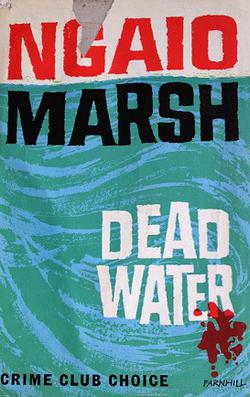
Dead Water is a detective novel by Ngaio Marsh; it is the twenty-third novel to feature Roderick Alleyn, and was first published in 1964.

Clutch of Constables is a detective novel by Ngaio Marsh; it is the twenty-fifth novel to feature Roderick Alleyn, and was first published in 1968. The plot concerns art forgery, and takes place on a cruise on a fictional river in the Norfolk Broads; the "Constable" referred to in the title is John Constable, whose works are mentioned by several characters.

When in Rome is a detective novel by Ngaio Marsh; it is the twenty-sixth novel to feature Roderick Alleyn, and was first published in 1970.

Photo Finish (novel) is a detective novel by Ngaio Marsh; it is the thirty-first, and penultimate, novel to feature Roderick Alleyn, and was first published in 1980. Set in a millionaire's island mansion on a lake in New Zealand's South Island, it is the last of Ngaio Marsh's four New Zealand set novels - the others being Vintage Murder (1937), Colour Scheme (1943) and Died in the Wool (1945).
















